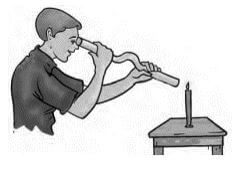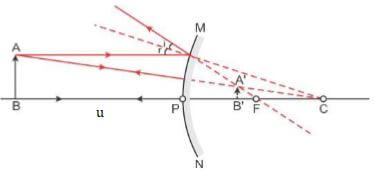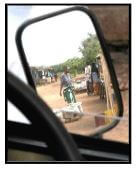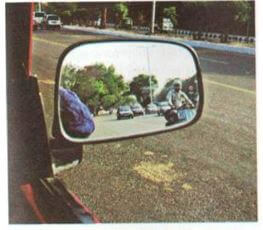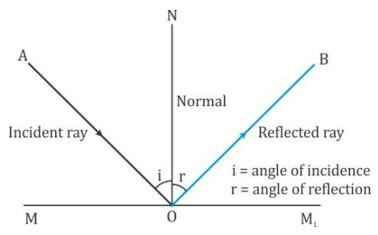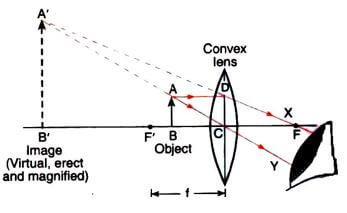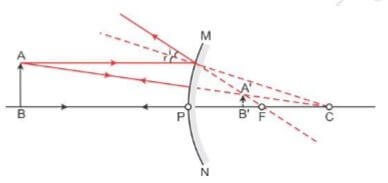Light Worksheet
Objective Type Questions
- Match the following:
- State whether the statement is true or false:
Riya observed that when she placed an object far from a concave mirror, the image formed was virtual and erect.
- Images formed by regular reflection are always _______ and _______.
- When Sheetal looks at her reflection on the inner side of a spoon, her image appears to be vertically inverted, indicating that it acts as a _______ mirror.
- Unscramble the following words:
(a) SIONPDISRE
(b) QUEOPA
(c) WODHAS
(d) XOVENC - Pick odd one out:
Prism, Compact disc, Rainbow, Plane mirror.
Multiple Choice Questions - What is the relation between angle of incidence and angle of reflection?
(a) They are vertically opposite.
(b) They are complementary angles.
(c) They are supplementary angles.
(d) They are equal.
- Riya is on the highway and wishes to change lanes. She looks in her rear-view mirror and notices a vehicle approaching from behind. She notices that the car looks smaller in the mirror than it does when she looks at it directly.
What can Riya deduce from the above scenario. Choose the most appropriate option among the following.
(a) The rear-view mirror is a concave mirror that produces both a real and an inverted image.
(b) A convex mirror forms a virtual and erect image in the rear-view mirror.
(c) The rear-view mirror is a plane mirror that produces an erect and virtual image.
(d) The rear-view mirror is a parabolic mirror that produces both a real and an inverted image.
- Suppose Sharadha stands 50 cm away from a plane mirror. What is the distance between her, and the image formed by the mirror?
(a) 1 m
(b) 2 m
(c) 0.5 m
(d) 2.5 m - A lens and an object were given to Samir by the teacher. He placed the object in front of the lens and obtained an upright and magnified image. According to Samir, the lens he is using can be ______.
i.Concave lens
ii.Convex lens
Choose the correct option among the following.
(a) Only i is correct
(b) Only ii is correct
(c) Both i and ii are correct
(d) Neither i nor ii are correct
- In a class demonstration, Aarav notices that when objects are placed very close to a concave mirror, no image is formed. What conclusions can be drawn from this observation?
(a) Concave mirrors form virtual, upright images at all distances.
(b) Concave mirrors form real, inverted images only when the object is far away.
(c) Concave mirrors do not form images when the object is too close.
(d) Concave mirrors form virtual, upright images when the object is too close. - During a science fair, a Prachi observes that when a glass of water is placed in sunlight, a rainbow-like pattern appears on a white paper placed under the glass. What causes this colourful pattern?
(a) Sunlight passing through the glass refracts and forms a spectrum of colours.
(b) The glass reflects the colours from objects around it onto the paper.
(c) The glass absorbs certain colours and only reflects others.
(d) The paper reacts chemically with the glass and changes colour.
Subjective Questions
- Sivananda is looking at a candle flame through a bent pipe, as shown in the figure below. What will he most likely notice. What can we deduce about characteristics of light from this activity?
- Ram placed a candle in front of a convex mirror at certain distance u, based on this he drew the ray diagram and concluded that the image formed by the mirror will be real, erect and diminish. Is Ram’s observation, correct? Justify your answer.
- List down the properties of different types of mirrors such as plane, convex and concave mirror and evaluate which type would be most suitable for use in a car’s side mirror. Justify your answer.
- In Rajiv's message to her brother, he said he could only see the rainbow if he turned in a direction opposite to the sun. Analyse Rajiv's statement and explain why the position of the sun is important for seeing a rainbow.
Assertion-Reasoning Questions
Select the correct answer to these questions from the codes (a), (b), (c) and (d) as given below:
- Assertion: Faiz is looking at himself in a plane mirror. The mirror and his image are 2 metres apart. If he moves one metre closer to the mirror, the distance between Faiz and his image will be 3 m.
Reason: The object distance is equal to the image distance for plane mirrors.
- Assertion: When a lens is placed on top of textbook the letters will appear bigger if it’s convex lens.
Reason: Concave lens produce diminish image.
- Assertion: In front of a huge glass building, Ajay waved his right hand and observed that the reflection was waving back its left hand.
Reason: A plane glass mirror produce upside down image.
Case-Based Questions
- Mridul is travelling with his family in their car on a highway. His father is driving the car and Mridul is sitting in the back seat. Suddenly, Mridul hears a loud siren and sees an ambulance approaching from behind though a rear-view mirror.
His father checks the rear-view mirror and moves the car to the side of the road to let the ambulance pass.
Answer the following questions based on the given information.
(a) Describe the image Mridul's father sees in his rear-view mirror. Is it real or virtual image?
(b) While viewing through the mirror Mridul notice that a phrase was written on “OBJECTS IN THE MIRROR ARE CLOSER THAN THEY APPEAR”. What does this indicate?
(c) What kind of mirror is used as a rear-view mirror? Why is this type of mirror used as opposed to others?
(d) In comparison to other types of mirrors, what advantages does this type of mirror provide the driver?
Explore more Science Sample papers and Solutions
-
Sample Papers for CBSE Class 7 Science Term 1 #1
-
Sample Papers for CBSE Class 7 Science Term 2 #1
-
Nutrition in Plants Worksheet
- Nutrition in Animals Worksheets
- Heat Worksheet
- Acids, Bases And Salts Worksheet
- Physical And Chemical Changes Worksheet
- Respiration in Organisms Worksheet
- Transportation In Animals And Plants Worksheet
- Reproduction in Plants Worksheet
- Motion And Time Worksheet
- Electric Current And Its Effects Worksheet
- Forests: Our Lifeline Worksheet
- Wastewater Story Worksheet
- Competency Based Questions for CBSE Class 7 Science
- Sample Papers for CBSE Class 7 Science Term 1 #2
- Sample Papers for CBSE Class 7 Science Term 2 #2
Key Features of Study Materials of CBSE Class 7 Science:
- Easiest and most comprehensive study materials
- Designed by subject matter experts
- Revised according to the latest CBSE syllabus
- Helpful for quick revision
- ‘Ask a Doubt’ facility
- Significant improvement in marks


